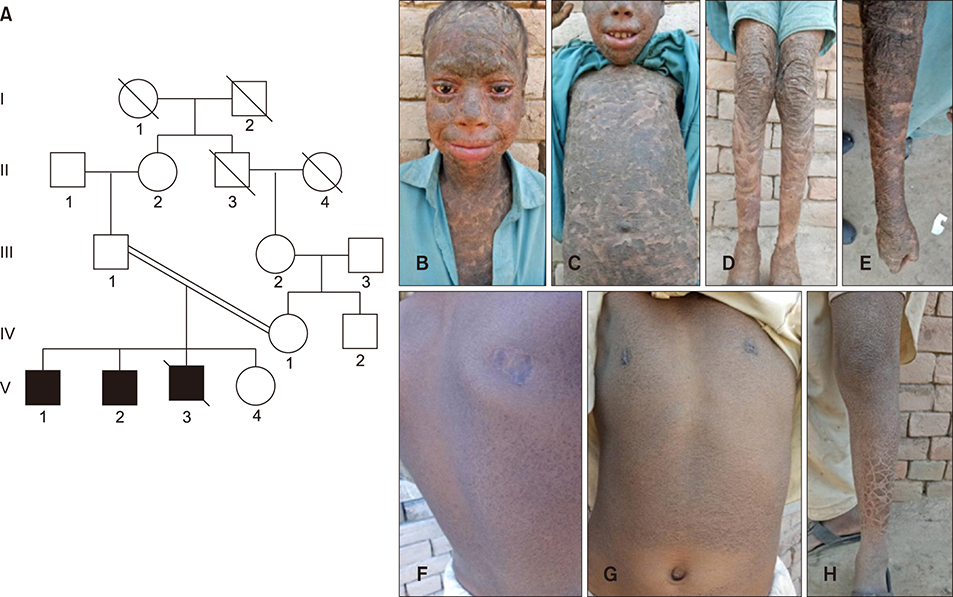Ann Dermatol.
2019 Oct;31(5):581-584. 10.5021/ad.2019.31.5.581.
Co-Occurrence of Autosomal Recessive Lamellar Ichthyosis and X-Linked Recessive Ichthyosis in a Consanguineous Pakistani Family
- Affiliations
-
- 1Medical Genetics Research Laboratory, Department of Biotechnology, Quaid-i-Azam University, Islamabad, Pakistan. mnaeem@qau.edu.pk
- 2Department of Dermatology, Nishtar Medical College, Multan, Pakistan.
- KMID: 2456239
- DOI: http://doi.org/10.5021/ad.2019.31.5.581
Abstract
- No abstract available.
MeSH Terms
Figure
Reference
-
1. Vahlquist A, Fischer J, Törmä H. Inherited nonsyndromic ichthyoses: an update on pathophysiology, diagnosis and treatment. Am J Clin Dermatol. 2018; 19:51–66.
Article2. Rajpopat S, Moss C, Mellerio J, Vahlquist A, Gånemo A, Hellstrom-Pigg M, et al. Harlequin ichthyosis: a review of clinical and molecular findings in 45 cases. Arch Dermatol. 2011; 147:681–686.3. Bittles AH, Black ML. Evolution in health and medicine Sackler colloquium: consanguinity, human evolution, and complex diseases. Proc Natl Acad Sci U S A. 2010; 107 Suppl 1:1779–1786.4. Richard G. Autosomal recessive congenital ichthyosis. In : Adam MP, Ardinger HH, Pagon RA, Wallace SE, Bean LJH, Stephens K, editors. GeneReviews®. Seattle: University of Washington;2001.5. Rasheed M, Karim N, Shah FA, Naeem M. Novel TGM1 mutation in a Pakistani family affected with severe lamellar ichthyosis. Pediatr Neonatol. 2018; 59:628–629.
Article6. Nakagawa N, Yamamoto M, Imai Y, Sakaguchi Y, Takizawa T, Ohta N, et al. Knocking-in the R142C mutation in transglutaminase 1 disrupts the stratum corneum barrier and postnatal survival of mice. J Dermatol Sci. 2012; 65:196–206.
Article7. Crane JS, Wu B, Paller AS. Ichthyosis X-Linked. Treasure Island: StatPearls Publishing;2019.8. Ghosh D. Three-dimensional structures of sulfatases. Methods Enzymol. 2005; 400:273–293.
Article9. Rice RH, Bradshaw KM, Durbin-Johnson BP, Rocke DM, Eigenheer RA, Phinney BS, et al. Distinguishing ichthyoses by protein profiling. PLoS One. 2013; 8:e75355.
Article10. Lal D, Neubauer BA, Toliat MR, Altmüller J, Thiele H, Nürnberg P, et al. Increased probability of co-occurrence of two rare diseases in consanguineous families and resolution of a complex phenotype by next generation sequencing. PLoS One. 2016; 11:e0146040.
Article



